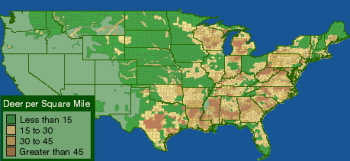Deer fencing to prevent lyme disease
Posted by Deer Fence on May 30th 2025
How a Deer Fence Can Prevent Lyme Disease
More than 400,000 people are diagnosed with Lyme disease per year in the United States, with approximately 14% of the world’s population being infected with the disease 1. Lyme disease infections are mainly caused by tick bites, more prevalently via the deer tick. You can get a tick bite from walking in the woods, running around in your yard when the grass is just a tad too high, and most commonly because of deer transporting ticks to your yard. The rate of Lyme disease spread is growing too as forests are being cut causing deer to migrate.


When it comes to being outdoors, especially in the woods or tall grass, it is important to routinely check for ticks to lower your risk of Lyme disease, but one of the best ways to prevent tick bites is a deer fence!
With migration happening due to constant environmental changes, deer will move to places with more grass and more plants like your garden. When deer migrate into an area, they carry with them all the ticks that they picked up while running through wooded areas. Then as they enter your yard to destroy your garden, these ticks will drop off and hang around. Deer are a source of blood for ticks and important to tick survival and movement to new areas 2. Therefore, by putting up a deer fence the deer can’t enter your yard and drop those tiny critters into your path, creating a tick-free zone around your house 3.
Besides installing a deer fence, it’s important to take secondary measures. Treat the area with a tick-killing spray containing an active ingredient like cedar oil that is safe for both pets and people. Keep your lawn cut short and leaf piles removed frequently. Repeating this will help to deal with the occasional tick brought in from outside the fence.
For a third layer of protection, even think about adding a rodent barrier to your deer fence as ticks can also be transmitted by mice, chipmunks, rabbits, and other small animals. With all these methods, you are much less likely to be bitten by ticks and therefore reduce your chances of developing Lyme disease.
Sources:
5 Tips for Preventing Tick Bites and Lyme Disease from Johns Hopkins

